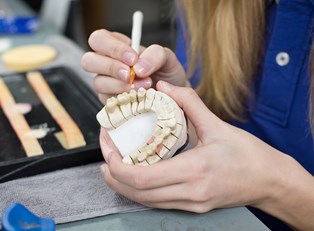There’s a social stigma surrounding poor-looking teeth, but thankfully there are options when it comes improving the appearance of yours. While dental veneers can be prohibitively expensive, with most costing at least $1000 a tooth, they’re still one of the most natural-looking and easiest options for people looking to change their teeth.
How do dental veneers work?
Dental veneers are applied to the surface of teeth to improve their appearance and protect them from damage. The most common materials used in veneers are porcelain and composite resin. Porcelain veneers are more resistant to stains and appear more natural, but composite ones require a less invasive procedure. Most veneers last anywhere from 10 to 30 years, although this time range is steadily increasing as researchers make improvements to the materials used as well as the application process.
What problems do dental veneers fix?
Dental veneers are most commonly used to address tooth discoloration from things like poor dental hygiene, root canals, or antibiotics like tetracycline. However, they can also be used to fix teeth that are misaligned or contain gaps, as well as worn down, chipped, or broken teeth.
How are dental veneers applied?
The first step in getting veneers is consulting with your dentist. He or she will want to know more about the reasons behind your desire for veneers and will be able to ensure that they are an appropriate choice for you. It’s possible that it will be necessary to take X-rays of your teeth as well during the consultation process.
Before veneers can be applied to your teeth, your dentist will need to remove some of your enamel to make room for them. The exact amount that needs to be removed will vary, but it’s typically no more than half a millimeter. Afterwards, your dentist will make an impression of your teeth, so that your veneers can be custom-made by a dental laboratory. It normally takes about two weeks to receive your veneers.
When it’s time for your veneers to be bonded, your dentist will normally begin by placing them on your teeth without adhesive to ensure that they’re a good fit. Sometimes it’s necessary to trim or adjust dental veneers in order to get things just right. After that, your dentist will etch your teeth, which will provide a rough surface for your veneers to more easily adhere to. Finally, the veneers will be applied to your teeth with dental cement and quickly sealed in place with a laser that activates the hardening agent in the adhesive.
Most dentists recommend that their dental veneer patients return in a few weeks so they can evaluate the placement of the veneers as well as how the patient’s gums have responded to the procedure.



